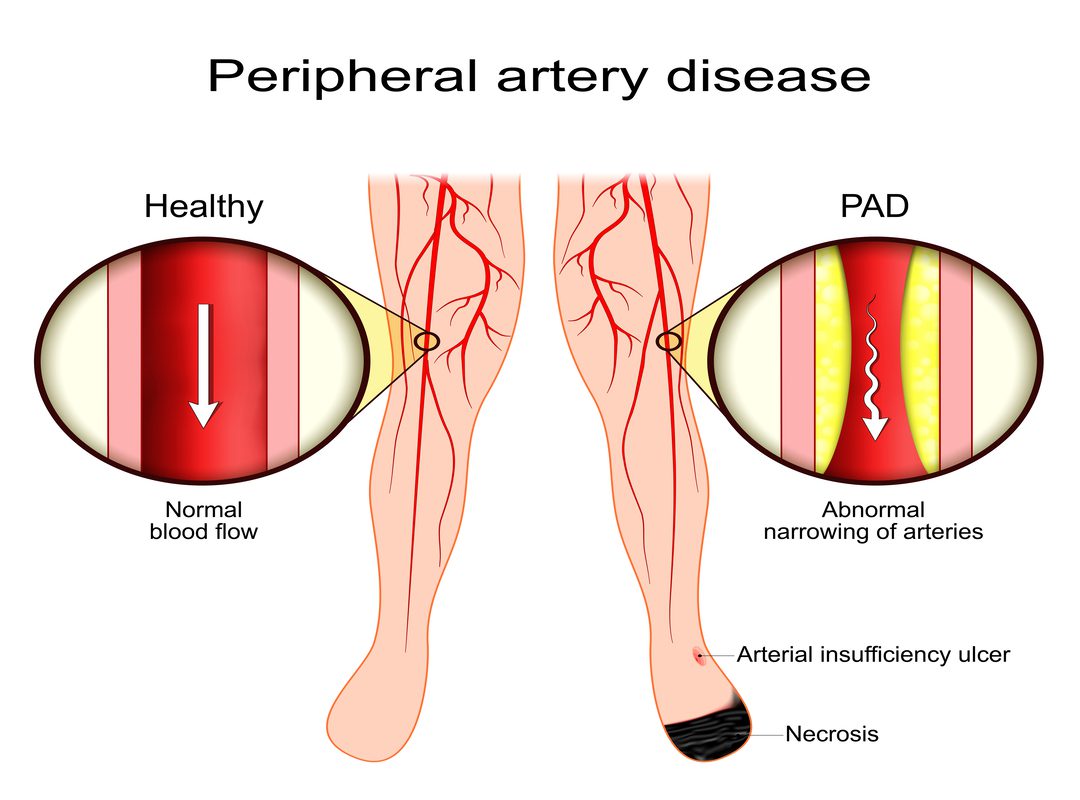Diabetes PAD

Diabetes, a chronic metabolic disorder that affects millions worldwide, often carries a host of complications that can significantly impact an individual’s quality of life. Among these complications, Diabetic Peripheral Artery Disease (PAD) is a particularly insidious condition. This blog aims to provide a comprehensive understanding of Diabetic PAD, its causes, symptoms, diagnosis, treatment options, and the importance of proactive management. The information presented here is particularly relevant to the Indian population, where diabetes prevalence is a significant concern.
Peripheral Artery Disease, commonly known as PAD, is a condition that primarily affects the arteries in the legs, limiting blood flow to the lower extremities. In the case of individuals with diabetes, the condition takes on the specific name of Diabetic PAD. The main cause of this condition is atherosclerosis, which is the buildup of fatty deposits or plaques in the arteries, narrowing and hardening them. In the context of diabetes, high blood sugar levels contribute to the development and progression of atherosclerosis.
Prevalence of Diabetic PAD
Diabetes is a burgeoning health crisis in India, with an estimated 101 million people affected as of 2021, and the number continues to rise. With such a high diabetes prevalence, the incidence of Diabetic PAD is also substantial, though it often goes undiagnosed. PAD affects around 1 in 3 people with diabetes over the age of 50, and increases the risk of developing heart attack and stroke.
Symptoms of Diabetic PAD
Diabetic PAD often progresses silently until it reaches an advanced stage. Common symptoms include:
- Intermittent Claudication: This is the most classic symptom of PAD, characterized by pain, cramping, or weakness in the leg muscles during physical activity.
- Numbness and Tingling: People with Diabetic PAD may experience a lack of sensation in their legs or feet.
- Changes in Skin: Skin on the legs or feet may appear shiny, smooth, or even pale.
- Slow Wound Healing: The reduced blood flow to the legs can slow down the healing of wounds or sores, increasing the risk of infection.
- Cold Legs or Feet: Reduced circulation can make the legs or feet feel cold to the touch.
Diagnosis and Detection
Early diagnosis is critical for effective management of Diabetic PAD. Non-invasive tests such as ankle-brachial index (ABI), duplex ultrasound, and magnetic resonance angiography can help identify blood flow blockages. In some cases, an angiogram, a more invasive procedure, may be required.
Treatment Options
Once diagnosed, the treatment of Diabetic PAD focuses on managing the symptoms, slowing the progression of the disease, and reducing the risk of complications. The following approaches are commonly employed:
- Lifestyle Modifications: Encouraging patients to adopt a healthier lifestyle is often the first step. This includes smoking cessation, regular exercise, and a heart-healthy diet.
- Medications: Medications like antiplatelet agents and cholesterol-lowering drugs can help manage risk factors.
- Minimally Invasive Procedures: For advanced cases, minimally invasive procedures like angioplasty and stent placement may be recommended.
- Surgery: In severe cases, bypass surgery may be necessary to reroute blood flow around the blocked artery.
Preventing Diabetic PAD
Prevention is crucial, particularly in the Indian context where diabetes is prevalent. Several key measures can help reduce the risk of developing Diabetic PAD:
- Blood Sugar Control: Maintaining optimal blood sugar levels is paramount in preventing Diabetic PAD.
- Regular Exercise: Engaging in regular physical activity improves circulation and overall cardiovascular health. Walking can help both treat and prevent PAD.
- Dietary Choices: A diet low in saturated and trans fats, and rich in fruits, vegetables, and whole grains, can reduce the risk of atherosclerosis.
- Quitting Smoking: Smoking significantly increases the risk of PAD. Quitting is one of the most effective preventive measures.
- Regular Check-ups: Periodic medical check-ups can help detect diabetes and its complications early.
Conclusion:
Diabetic Peripheral Artery Disease is a serious complication of diabetes, particularly relevant in the context of India’s rising diabetes epidemic. Its impact on the quality of life can be substantial, making prevention and early detection imperative. This overview highlights the importance of proactive management, lifestyle changes, and regular check-ups for individuals with diabetes, with the ultimate goal of reducing the burden of Diabetic PAD in the Indian population.48,49



